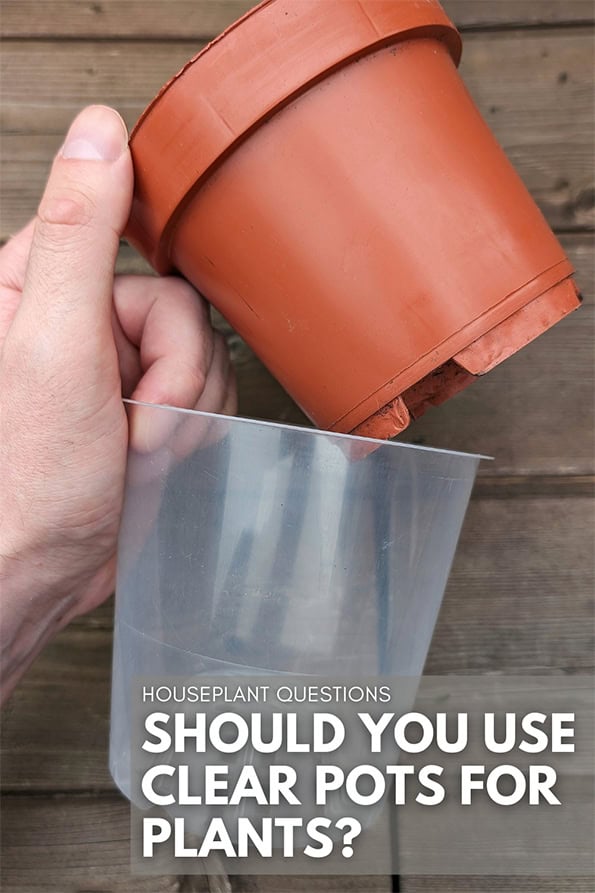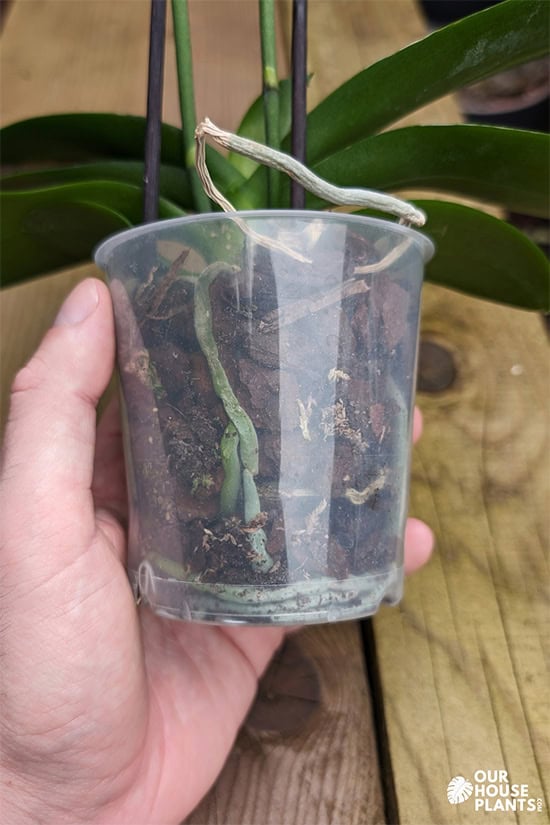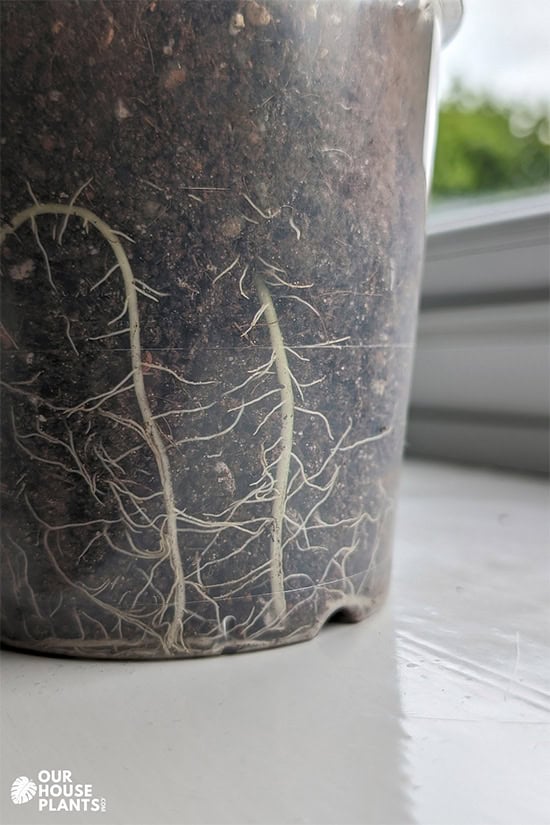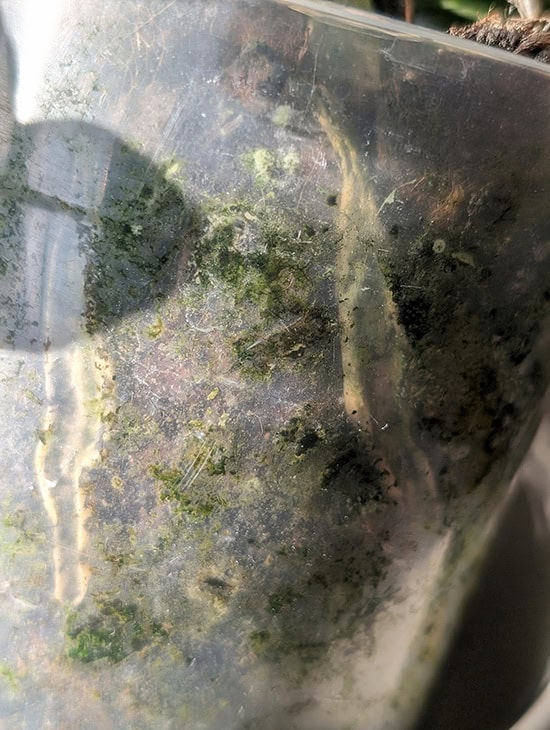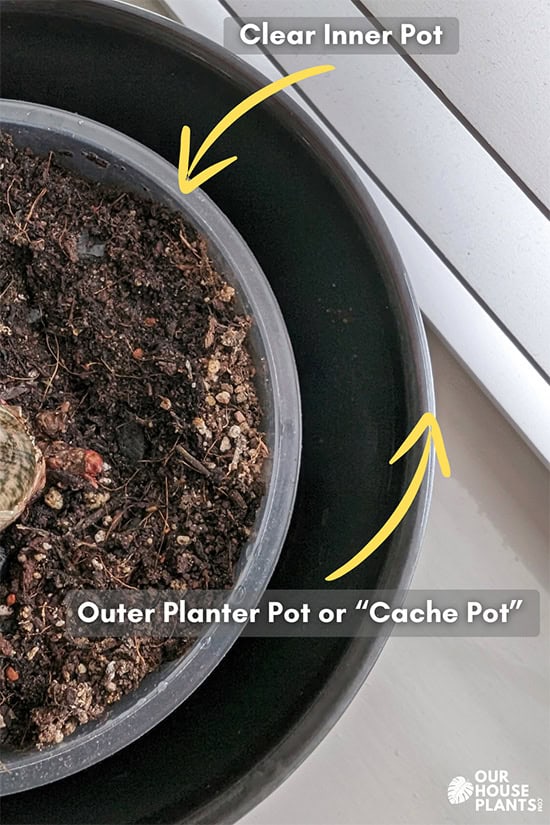Most plants you buy come with an opaque pot, so by default, most people use them for indoor plants, but you can use clear pots, too. In some cases, transparent containers should be used for certain plants, especially for orchids, some Aroids, and other epiphytes.
Even if you have a "normal" houseplant, you can still use clear pots as they offer several benefits. They can actually improve the growing experience and increase the health of your plants.
Does the traditional opaque nursery pot provide the perfect environment for growing plants? Or Should we consider using a clear plastic pot instead? This article will explore this topic in more detail.
There are some major positives to using transparent containers, but there are also a handful of drawbacks that can cause issues. If you're convinced to try clear pots with your own plants after reading my article, I'll share some suggestions to help overcome the problems you might face.
Clear pots are nothing new in the houseplant world; they have been around for decades. Almost every Moth Orchid you can buy will come in a clear plastic container by default. These popular plants need them to do well in our home environments.
Several orchids have specialised roots coated in velamen, a natural substance that allows them to carry out photosynthesis in the roots as well as several other helpful processes. So clear pots are a fantastic way to allow light to reach the roots and help replicate their natural growing conditions.
Transparent pots are almost always used for Phalaenopsis (as well as some other plants). They allow light to reach the roots which then photosynthesize, providing much needed energy for the plant.
So what if your houseplant is a regular plant without any specialised roots? There are are actually a lot of other plants with velamen roots; (including Spider Plants and Anthuriums) however even if they're not on that list, then clear pots can still be used in most cases.
Here's why.
Some people think plants grow their roots downwards because they're seeking darkness. So you have to use an opaque pot to keep the light away from the roots. But in the main, roots grow down into potting mixes and soils not because they want to be in the dark but because of gravitropism. Meaning they have a natural inclination to grow in the direction of gravity aka downwards.
That said, studies have shown most plants have roots that can sense light levels. A small number of plants grow longer and stronger roots with light being present, but most tend to be discouraged from growing towards the light and this is known as negative tropism.
If most plants strongly react to light hitting their roots, then using clear containers would obviously be bad. The roots would grow only in the center of the containers and not to the edges, wasting the available space.
However, root gravitropism is generally much more powerful and has a stronger effect than negative tropism. So, plants grown in clear pots should still have root growth that takes up all the available space in the clear container, in ways similar to those growing in nontransparent pots.

Hi, I'm Tom!
If you're like me and enjoy the challenge of growing houseplants and getting them to thrive, then Ourhouseplants can help. This website shares my knowledge and years of growing plants and provides (hopefully) helpful advice on properly caring for your indoor plant friends.
Alright, so I've shown you that you CAN use clear pots if you'd like. Here are the pros and cons of using them for your plants.
To see how the potting mix and roots change in the presence of water, use the slider in the below photo to move or tap back and forth.
Orchid roots before and after watering in a typical clear moth orchid pot.
This is the main reason people like clear pots. You have a perfect view of the plant's root health and can see if they're growing well. Plus it looks pretty cool.
Those are the four main advantages. They might not seem to be a big deal, but the roots of your plant are essential for the well being of your houseplants. Without them, you won't having anything growing above the soil. Anything that can enhance and improve root health should be welcomed.
Clear pots can and should make you a better plant parent and help ward off problems. I wasn't sure about them initially, but after using them over the last few years I'm a believer. I don't like the phrase "game changer" but it's true and for people who struggle with watering issues, using them can really help in a big way.
It's not all celebrations though and there are a few drawbacks that clear containers can bring to the party.
A clear grow pot combined with moisture, will often create an algae problem over time, which is one of the main disadvantages of using them.
The drawbacks I've laid out above, may put some people off giving them a go. But I do have some simple solutions to these potential problems.
Looking at cost first. If you often lose plants through overwatering, the cost of investing in some clear pots may be better than losing plants time and time again.
If you're a thrifty person you may be able to ask friends or family for theirs or find them cheap in charity shops or thrift stores. Many large retail stores offer recycling of plastic pots. It's far better to reuse than spend energy recycling the plastic, so they may be willing to let you take any donated clear plastic pots for free, or perhaps exchange.
Food and beverage containers from grocery stores and restaurants can also make good plant pots. They come in all different sizes and after you've washed them and poked a few drainage holes at the base they're ready for their new use..
Heat, aesthetics, negative tropism and algae growth can all be dealt with easily.
Use a cachepot! Otherwise known as a "planter", "overpot", "outerpot" or "decorative container". There are many different names for cachepots, but they are all the same thing. It's usually a heavy decorative pot with no drainage holes at the bottom. The nursery pot or, in this case, the clear pot then sits within it.
Doing this, blocks heat, light, and improves aesthetics. This reduces or prevents all the negative effects that using clear pots can cause.
That's it for this article. Let me know your thoughts below. Although people have used clear pots for years, this is still a fairly new concept. I'll update or amend the article if more studies and research become available. In the meantime, I'd love to hear if using them has worked out well for you.
